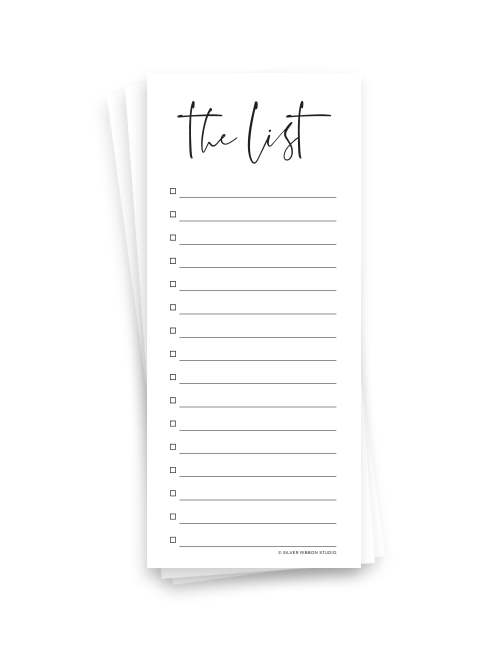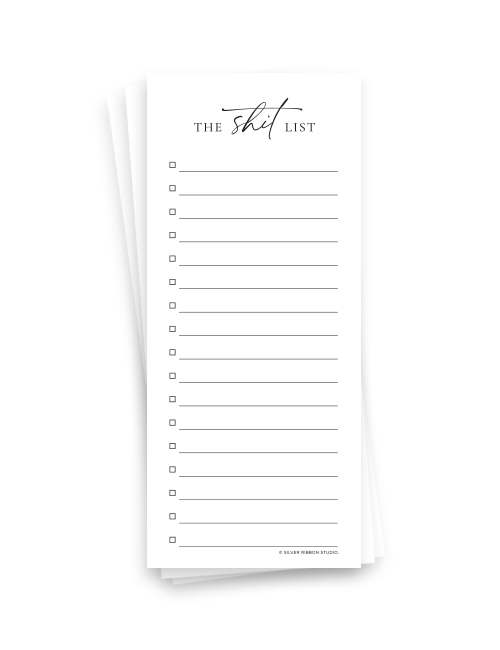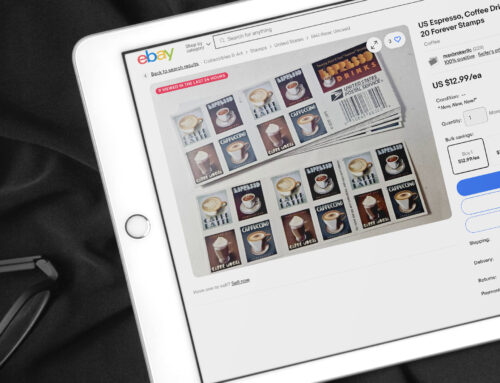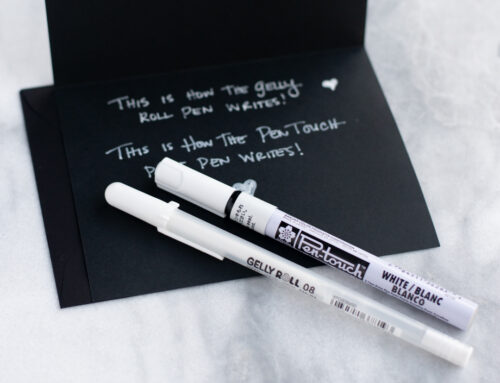New Year, new goals, new habits, or maybe not…
It’s January so of course everyone’s talking about the next new system or habit you need to be productive and make progress toward your goals. But, you may not actually need something new to get results — you may just need to tweak a habit you already have.
Cue my favorite productivity tool: The List – Checklist Notepads
While a checklist is a valuable tool it can be overwhelming if you just look at all the shit you have to do.
Rather than get stuck on the quantity of things to do or making your checklists perfect, I recommend the following ways to get the most out of them:
1. Get a List You Like to Look At
This is similar to designing a work space that inspires you to work. You’re going to be using your list daily, so make sure to pick one that you’re going to love looking at, and that works with your personal style.
2. Use Multiple Lists
I have at least 4 lists that I use for various areas in my life to help keep me organized. When you keep the tasks on separate lists you feel less overwhelmed at the size of the list, and can focus on the tasks in that area of your life, which helps your mind stay on track.
Try to place the lists where you will use them in that part of your daily life. For example: 1 list for home specific tasks is in the living room, 1 for production/service tasks in my office, 1 for business development/marketing also in my office, and 1 for things needed to buy, groceries, etc is in the kitchen. I also keep 1 in my car in case I forget the list at home and need to make one again ;)
3. Make Your Work List at the End of the Day
Before you closing up shop or leaving the office for the day, make a fresh list for the next day. This sets you up for success first thing in the morning by having that action plan of the most important things to do ready to go.
You’re inevitably going to add things throughout the day that you just can’t get to that day. And, there will be days you can’t finish the things on your list. Here’s where you can take the time to roll those over to the next day without forgetting about them.
4. Single Task
Single tasking is something I’ve found to be immensely powerful. Not only does it make doing tasks more efficient, but also makes it less overwhelming to make your lists to begin with, since you aren’t trying to evaluate priorities while trying to remember everything.
Task One: Brain Dump.
List out everything that comes to mind as task #1. Don’t think about the importance of each thing yet, just list it out for now. If you’re like me, just having it off your mind and on paper will already make you start to feel more organized.
Task Two: Prioritize Top 3 Tasks.
Review all the items on your list and target the top 3 items you need to make happen in order to meet a deadline, and things that others are waiting for you to complete to proceed with an important project. Number those top items in the order of what has to get done first. This gives you a game plan to start making that shit happen!
Task Three: Tackle Deadline Driven Tasks First.
Start with the one thing you have to get done for an approaching hard deadline, even if it’s the last thing you want to do. By doing time sensitive tasks first you get the worry of missing the deadline out of the way.
If that’s done or none of your tasks have deadlines, celebrate, then Eat the Frog, as you may have heard before. (Yes, this really fucking works.) By getting the big scary thing you dread doing out of the way first you get a sense of relief and accomplishment, then move on.
Task Four: Do What You Want To Do Most.
Once you’ve choked down that frog and have no items left with hard deadlines, start with the one thing you are most inspired to do. For example if I’m feeling really inspired to complete task #8 ahead of important task #5, I will not fight the energy if possible. By completing that first task, you’ll feel more productive, inspired, and want to keep going.
5. Add to The List + Make a Priority Checkpoint
If it’s not on the list, it won’t get done. Add to the list as things come up throughout the day or as you remember them while you’re working on other things.
The key here though is to make time to evaluate your priorities.
There may be 4 more things added to the list by the time you get to #3. Something that comes up on the list my actually become a higher priority than what you had marked #3 before so you can re-number it. If you make it routine to check for adjusted priorities, perhaps at the midpoint of each half of your day, that will help you stay on track with what’s most important.






